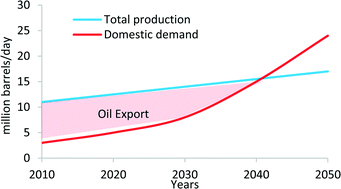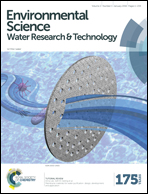Future sustainable desalination using waste heat: kudos to thermodynamic synergy†
Abstract
There has been a plethora of published literature on thermally-driven adsorption desalination (AD) cycles for seawater desalination due to their favorable environmentally friendly attributes, such as the ability to operate with low-temperature heat sources, from either the renewable or the exhaust gases, and having almost no major moving parts. We present an AD cycle for seawater desalination due to its unique ability to integrate higher water production yields with the existing desalination methods such as reverse osmosis (RO), multi-stage flashing (MSF) and multi-effect distillation (MED), etc. The hybrid cycles exploit the thermodynamic synergy between processes, leading to significant enhancement of the systems' performance ratio (PR). In this paper, we demonstrate experimentally the synergetic effect between the AD and MED cycles that results in quantum improvement in water production. The unique feature is in the internal latent heat recovery from the condenser unit of AD to the top-brine stage of MED, resulting in a combined, or simply termed as MEAD, cycle that requires no additional heat input other than the regeneration of an adsorbent. The batch-operated cycles are simple to implement and require low maintenance when compared with conventional desalination methods. Together, they offer a low energy and environmentally friendly desalination solution that addresses the major issues of the water–energy–environment nexus.


 Please wait while we load your content...
Please wait while we load your content...